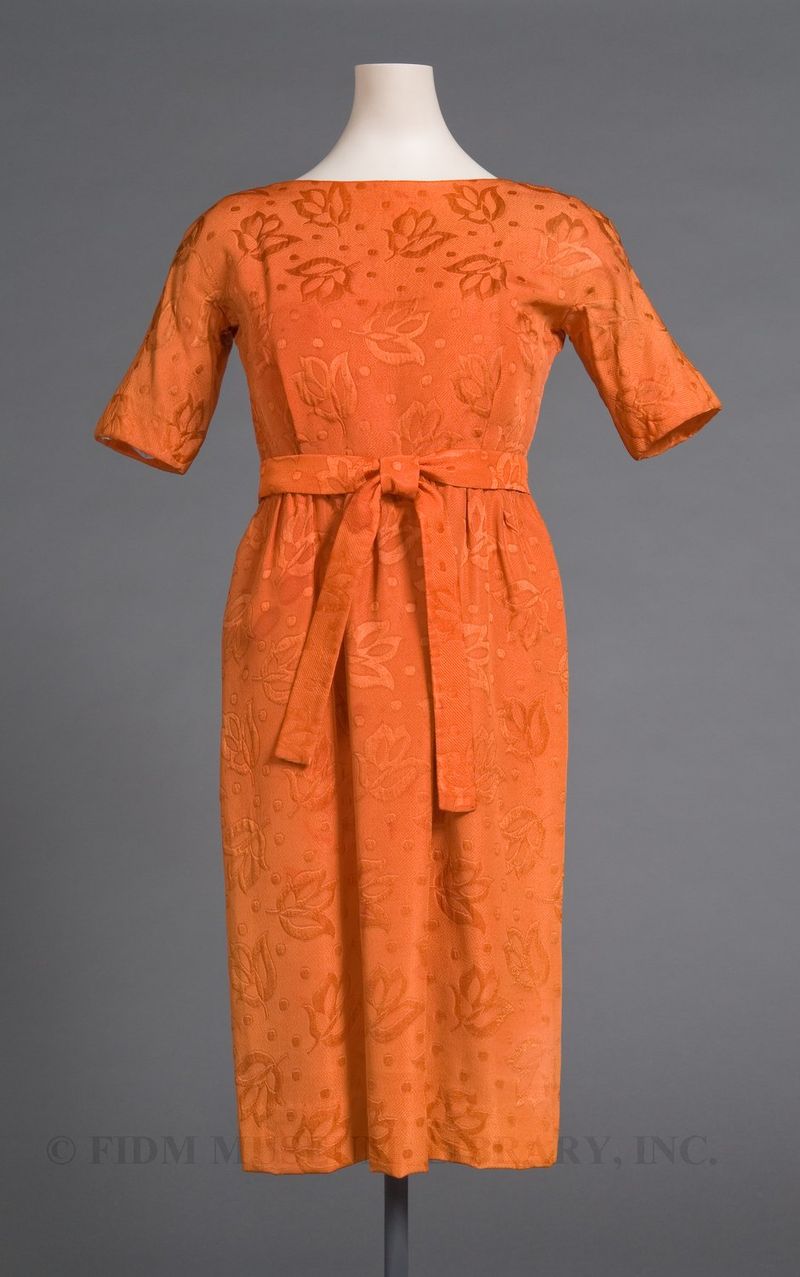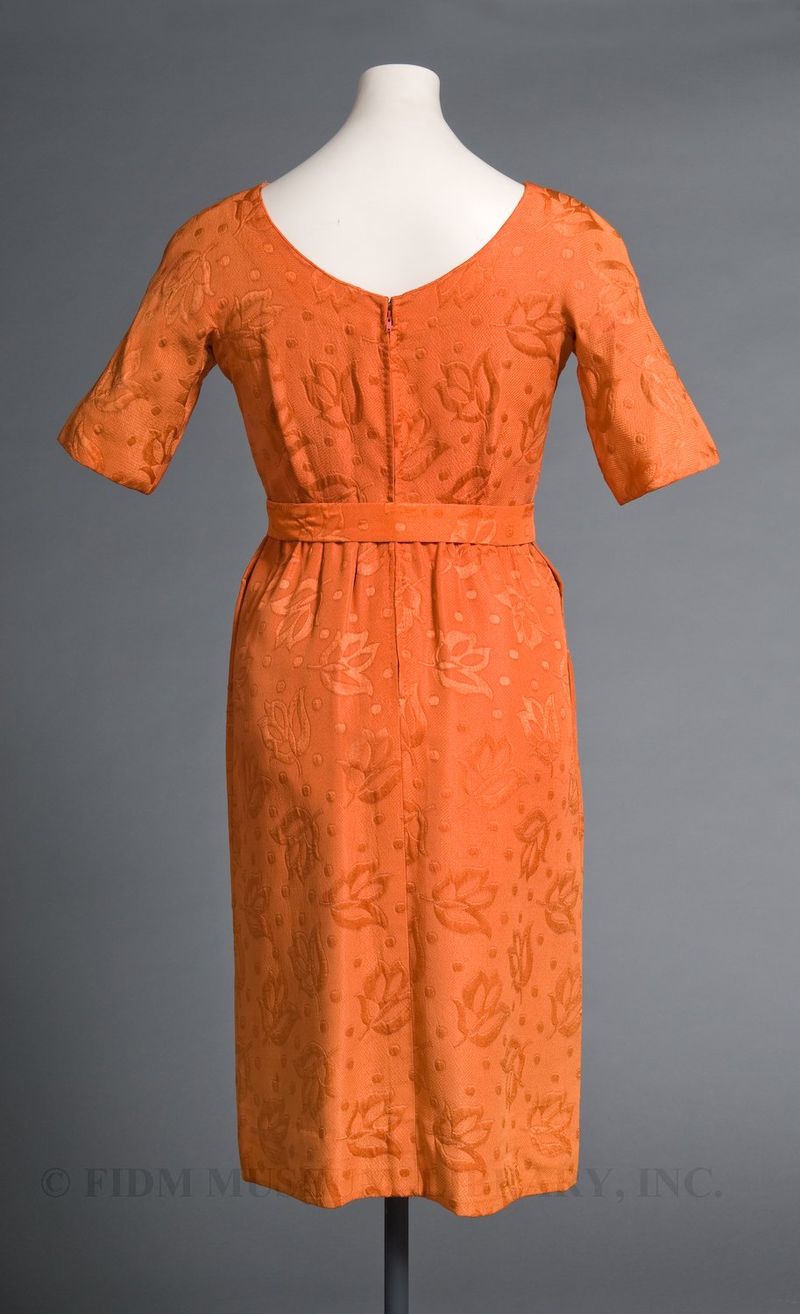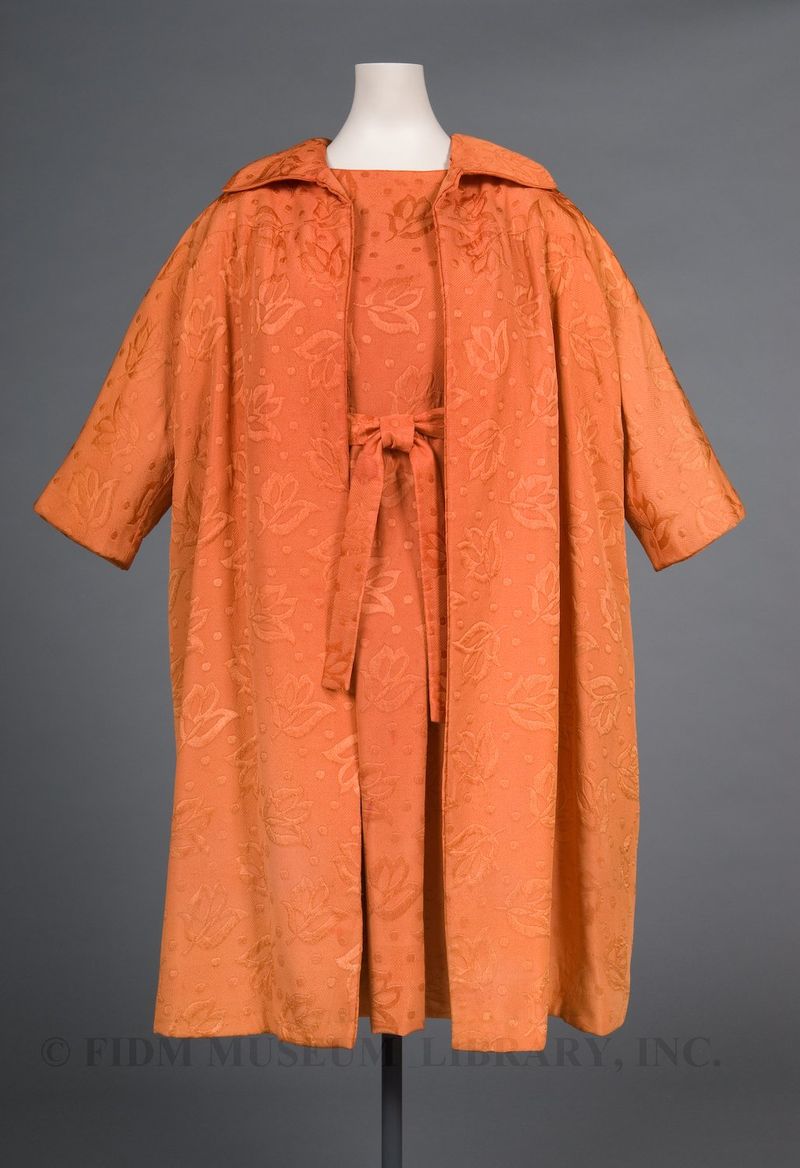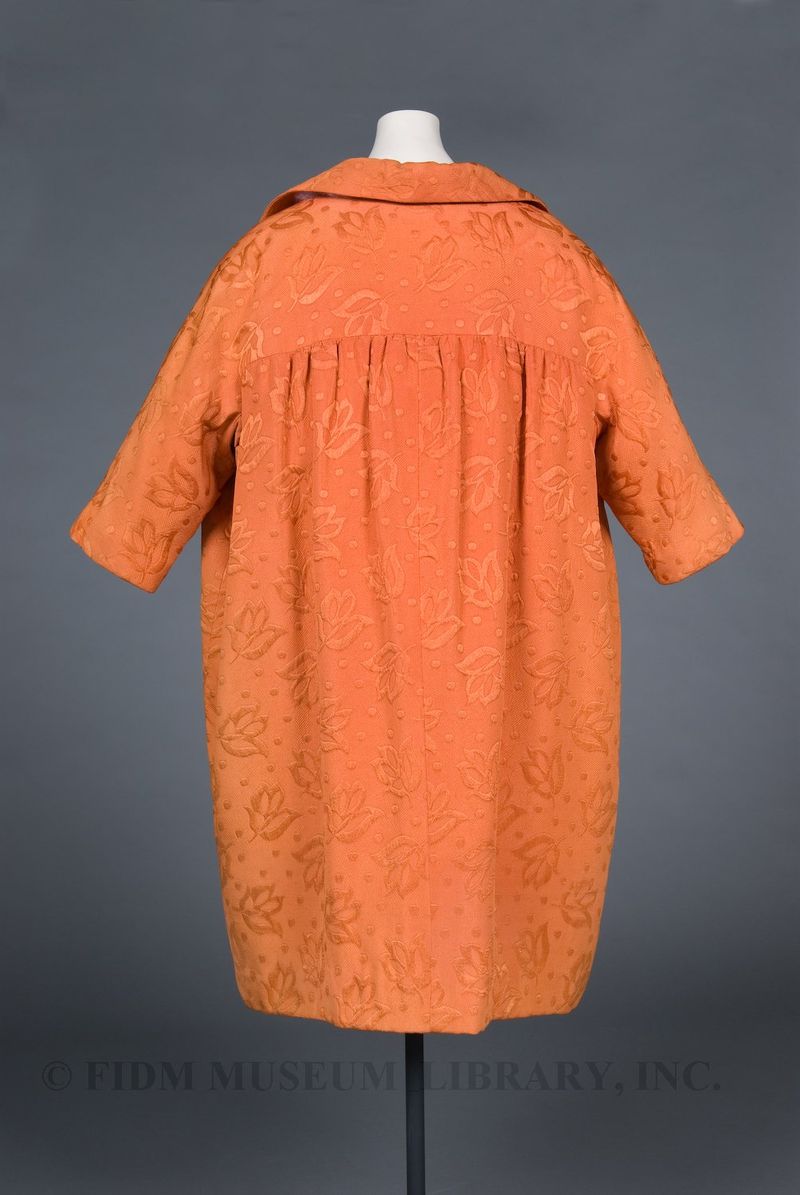Balenciaga
Popular conceptions of 1950s dress usually fixate on the defined waist and full skirt of Christian Dior's New Look. Though this silhouette dominated fashion for much of the decade, in 1957 a new shape appeared. Called the sack or chemise, this new dress skimmed and enveloped the body instead of enforcing an hourglass silhouette. Presented by both Christian Dior and Balenciaga, credit (and blame) for the innovation went to Balenciaga. Variations on the chemise soon appeared, including this belted Empire-waist version designed by Balenciaga.
 Chemise dress Balenciaga 1959-1963
Chemise dress Balenciaga 1959-1963
Transfer from the Museum at FIT Gift of the Estate of Anita Loos Emerson S2004.291.15A-D As the name suggests, sack dresses hid the body and were thus a source of controversy. Men (and some women) reputedly disliked them because the "sack" shape was figure-concealing, resembling "Grandpa's nightshirt."1 Those who appreciated the shape, including Carmel Snow of Harper's Bazaar, lauded its modernity and simplicity of form. Despite the naysayers, the sack/chemise shape soon became the dominant silhouette, eventually evolving into the iconic 1960s mini dress.
The straightforward silhouette of the chemise points to Balenciaga's interest in pure form. Though many early Balenciaga dresses were frothy confections built around a rigid corset and defined waist, by the early 1960s Balenciaga's designs had pared down and moved away from the body. Using stiff fabrics like silk taffeta and silk gazar, Balenciaga created dresses that can be broken down into geometric forms. The barrel shaped coat below is an example of this experimentation. As the 1960s progressed, Balenciaga concentrated more and more on exploring form. Though Balenciaga didn't name his designs, the fashion press labeled individual garments based on their resemblance to various shapes. Most notable were the 4-sided dress (1967) and the trapezoid wedding dress (1967).
With coat Balenciaga was not interested in shaping the body into a predetermined form, but on working with or around the body to create compelling garments. In construction, he placed great emphasis on comfort. Arms were meant to slide into sleeves easily and the cut of a garment allowed for ease of movement. Balenciaga's clients varied widely in age, so he designed collars which framed and showcased the neck, an area of the body that often remains beautiful as the rest ages. It was even said that he had nothing against a slightly round stomach, designing his skirts with a slight gather to allow for an expanding waistline.
1 "Grandpa's Nightshirt Makes Good." The Washington Post 28 Aug. 1957: B5.


